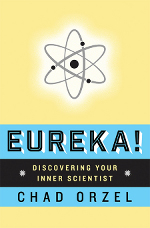Over at Medium, they’ve published a long excerpt from Eureka: Discovering Your Inner Scientist, that gives a good flavor of what the book’s really like. It’s about how the process for solving hidden-object games like the classic Where’s Waldo books is comparable to the process used by Henrietta Leavitt to revolutionize our understanding of the universe:
There are multiple web sites and academic papers devoted to computer algorithms for locating Waldo within Handford’s drawings, using a variety of software packages, and these are impressively complex, running to hundreds of lines of code and invoking sophisticated image-processing tools. Child’s play, this is not.
The essential element of these books is pattern matching, looking for a particular arrangement of colors and shapes in the midst of a distracting field. There are numerous more “adult” variations on this game, some of them obvious, like the image-based “hidden object” puzzle games Kate sometimes plays for relaxation, or the classic video game Myst. Other classes of games may not seem directly connected, but use the same pattern-finding tricks, such as solitaire card games like Free Cell (my own go-to time-waster) or colored-blob-matching games like the massively popular Candy Crush. In all of these, the key to the game is spotting a useful pattern within a large collection of visual data. This is a task at which human brains excel, and millions of people do it for fun and relaxation.
The unmatched ability of humans to spot meaningful patterns in visual data is the basis for many scientific discoveries, in all sorts of different fields.
This is cut down from Chapter 4 of the book (which adds the story of Jocelyn Bell’s discovery of pulsars), but keeps the core structure of the chapters: a story about an everyday activity, an then an analogy connecting that to a great scientific discovery. It also ends with some encouragement to go out and put your inner scientist to work, but you’ll need to read the whole piece to get that…
